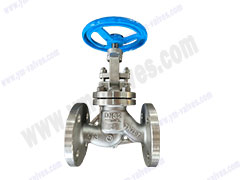-
Treatment methods for valve welding defects
-
1. Porosity
Porosity is a cavity formed when the gas in the molten pool fails to escape during solidification during welding.
Treatment method:
Surface pores: First, use a grinding wheel or wire brush to grind off the weld metal around the pores to expose fresh metal, and then use manual arc welding or gas shielded welding for repair welding. Pay attention to controlling the welding process parameters during repair welding. The welding current can be slightly larger than that during normal welding to ensure that the weld metal has sufficient melting depth so that the gas in the pores can escape.
Internal pores: Generally, it is necessary to perform non-destructive testing on the weld first to determine the location and size of the pores. Then use carbon arc gouging or mechanical processing to remove the weld metal at the location of the pores until the metal without pores is exposed. Then perform repair welding. The repair welding process is similar to the surface pore treatment, but the welding quality must be more strictly controlled to prevent the recurrence of pores.
2. Slag inclusions
Slag inclusions refer to the slag remaining in the weld after welding.
Treatment method:
Surface slag inclusion: Use a grinding wheel or wire brush to remove the slag inclusion, and then perform repair welding. When repairing welding, pay attention to cleaning the groove, adjusting the welding process parameters, and ensuring that the weld metal and the base material are well fused.
Internal slag inclusion: If the slag inclusion is shallow, the slag inclusion area can be removed by carbon arc air gouging, and then repair welding is performed. If the slag inclusion is deep, it may be necessary to use drilling and other methods to remove the slag inclusion before repair welding. During the repair welding process, pay attention to controlling the welding heat input to avoid deterioration of the weld structure due to overheating.
3. Cracks
Cracks are one of the most serious defects in valve welding and are extremely harmful. Cracks can be divided into hot cracks, cold cracks, and reheating cracks.
Treatment method:
Hot cracks: First, determine the depth and length of the cracks. For shallow hot cracks, grind the cracks with a grinding wheel until the crack-free metal is exposed, and then perform repair welding. When repairing welding, control the welding process parameters, reduce welding stress, and appropriately use methods such as low current, multi-layer and multi-pass welding. For deep hot cracks, it may be necessary to use the method of repairing welding after digging out the cracks. The dug-out parts should be preheated before repairing welding, and slow cooling should be performed after repairing welding.
Cold cracks: Once cold cracks are found, the cracks should be thoroughly inspected and analyzed first to determine the direction and depth of the cracks. For shallow cold cracks, the method of repairing welding after grinding to remove the cracks can be used, but strict preheating must be performed before repairing welding. The preheating temperature is generally determined according to factors such as the material and thickness of the parent material, usually between 150℃ and 350℃. For deep cold cracks, it may be necessary to use methods such as drilling to stop cracks and repairing welding after digging out cracks. During the repairing welding process, the welding heat input and interlayer temperature should be strictly controlled. Heat treatment should be performed in time after welding to eliminate welding residual stress and prevent cracks from occurring again.
Reheating cracks: For reheating cracks, first of all, try to avoid welding and heat treatment under conditions that are prone to reheating cracks. If reheat cracks have already appeared, it is generally necessary to use the method of digging out the cracks and then re-welding. The welding process should be optimized according to the characteristics of the steel, such as controlling the welding heat input and selecting suitable welding materials. During post-weld heat treatment, the heating rate, insulation time and cooling rate should be reasonably controlled to reduce the risk of reheat cracks.
4. Incomplete fusion and incomplete penetration
Incomplete fusion refers to the phenomenon that the weld metal and the parent material or the layers of the weld metal are not completely melted and combined; incomplete penetration refers to the phenomenon that the root of the weld joint is not completely melted.
Treatment method:
Incomplete fusion: For surface incomplete fusion, the unfused part can be polished off with a grinding wheel and then re-welded. When re-welding, the welding process parameters should be adjusted to ensure sufficient heat input so that the parent material and filler metal are fully melted. For internal incomplete fusion, it is generally necessary to use non-destructive testing methods to determine the location and range of the incomplete fusion, and then use carbon arc gouging or mechanical processing to remove the incomplete fusion part, and then perform repair welding.
Incomplete penetration: The treatment method is similar to the internal lack of fusion, that is, first determine the location and range of the incomplete penetration through non-destructive testing, then use appropriate methods to remove the incomplete penetration, and then perform repair welding.
5. Other precautions
Professional operation: The treatment of valve welding defects needs to be operated by professionals to ensure the quality and safety of the treatment.
Strict inspection: After the treatment is completed, the weld needs to be strictly inspected, including appearance inspection, non-destructive testing, etc., to ensure that it meets the use requirements.
Preventive measures: In order to reduce the occurrence of valve welding defects, preventive measures need to be taken, such as optimizing the welding process, selecting appropriate welding materials and equipment, etc.




.jpg)
.jpg)
.jpg)